Influent vs effluent
“Influent” and “effluent” are two terms commonly used in the context of wastewater treatment and environmental engineering to refer to different stages and components of the wastewater treatment process:
Influent
Influent refers to raw or untreated sewage that enters a wastewater treatment plant. This wastewater comes from a variety of sources, including domestic, industrial, and commercial, and contains a variety of pollutants, including organics, suspended solids, nutrients, and potentially harmful substances.
Effluent
The effluent, on the other hand, is the treated wastewater that is discharged after various treatment processes are carried out in a wastewater treatment plant. The goal of a wastewater treatment plant is to remove or reduce pollutants and contaminants from the influent water to minimize the environmental impact of the effluent. The effluent is usually discharged into rivers, lakes or oceans, and it should meet regulatory standards to ensure that it does not pose a hazard to the water ecosystem or public health.

Where does the influent come from?
Influent typically comes from a variety of sources, including the following major sources:
- Domestic and residential areas: A large proportion of influent comes from domestic and residential areas. This includes wastewater from kitchens, bathrooms, washing machines and other household equipment. These domestic wastewaters include detergents, bath products, kitchen wastewater, toilet paper, etc.
- Industry: Industrial processes generate large quantities of wastewater, which includes a variety of chemicals, minerals and pollutants. Wastewater from different industries may contain different hazardous substances and requires proper treatment.
- Commercial: Commercial buildings such as restaurants, shopping centers, office buildings and hotels also generate wastewater, which includes wastewater from restrooms, kitchens and other facilities.
- Stormwater: Stormwater can also be part of the influent, especially in urban areas where it can mix into the sewer system.
- Medical facilities: Hospitals and medical facilities generate wastewater containing biomedical waste that requires special treatment.
- Agriculture: Agricultural activities generate agricultural wastewater, which includes irrigation discharges and wastewater from plant and animal pesticides.
These influent sources may contain a variety of different pollutants and contaminants, including organic matter, suspended solids, nutrients, heavy metals, chemicals, and microorganisms. As a result, the influent must be properly treated to remove or minimize these pollutants prior to entering the treatment plant to ensure that the effluent quality meets regulatory standards and does not pose a hazard to the environment and public health.
How is influent collected?
Collection of influent is accomplished through a specially designed wastewater collection system, which typically includes the following major components:
- Sewer system: The sewer system is a key component of wastewater collection in a city or community. It consists of a series of underground pipes responsible for collecting wastewater from a variety of sources, including domestic, commercial, industrial, and stormwater discharges. These pipes are usually located along streets and roads and direct wastewater from houses and buildings to wastewater treatment facilities.
- Drainage devices: Inside homes and buildings, drainage devices include sinks, kitchen sinks, toilets, bathtubs, showers, washing machines, and dishwashers. These devices discharge wastewater through drain pipes and convey it to the sewer system.
- Inspection and interceptor wells: Inspection and interceptor wells are an important part of the sewer system and are used to monitor and control wastewater flow. They are typically located at intersections in the sewer network and are used for inspection, maintenance, and removal of blockages and debris from the sewers.
- Sewage pumping stations: Sewage pumping stations are used to pump wastewater from low-lying areas or away from the wastewater treatment plant to a higher location for further conveyance to the treatment facility. These pumping stations include pumps, control systems, and storage facilities.
- Pipes and conveyance systems: Pipes and conveyance systems in the sewer system transport wastewater from various locations to the treatment plant. These pipes are usually sealed to minimize wastewater leakage and outside contamination.
- Monitoring and control equipment: Modern wastewater collection systems are usually equipped with monitoring and control equipment to monitor wastewater flow, quality, and pollutant concentrations, and to automate the control of flow direction and flow.
- Wastewater treatment facilities: Ultimately, wastewater is conveyed to a wastewater treatment facility, such as a wastewater treatment plant. Here, the wastewater undergoes a series of treatment steps to remove pollutants, organics, and other contaminants in order to convert it into clean effluent.
Where is the influent water collected?
Influent is typically collected into a sewer system that is specifically designed to collect, convey, and treat wastewater. Specifically, influent water is collected and conveyed to the wastewater treatment facility through the following steps:
- Inside houses and buildings: Inside houses and buildings, wastewater is discharged from a variety of drainage fixtures (e.g., sinks, bathtubs, kitchen sinks, toilets, washing machines, etc.) into a system of drainage pipes. These pipes carry wastewater from the interior of the building to a larger sewer line or sewer collection system.
- Sewers: Sewer lines are usually connected to a city or regional sewer system. Sewers are a vast underground network used to collect wastewater within a city or community. These sewers carry wastewater from various sources to wastewater treatment plants or sewage pumping stations.
- Sewage pumping stations: Sewage pumping stations are used to lift wastewater when the terrain is lower than the wastewater treatment plant or when wastewater needs to be transported from one place to another. These pump stations pump wastewater to a higher location so that it can continue to flow to the treatment facility.
- Wastewater treatment plants: Ultimately, wastewater is conveyed to a wastewater treatment plant or wastewater treatment facility. Here, the wastewater undergoes a series of physical, chemical, and biological treatment steps to remove pollutants, organics, and other contaminants, ultimately transforming it into cleaner effluent.
In summary, influent water enters a city or regional sewer from inside a building through a system of drainage pipes, and is then lifted through a sewage pumping station and ultimately conveyed to a wastewater treatment plant. Within the treatment plant, the influent undergoes several stages of treatment to ensure that the quality of the effluent meets regulatory standards and does not pose a hazard to the environment or public health.
So what does the effluent need to be treated before it can be discharged?
Before effluent is released into the environment, it is usually subjected to a series of treatment steps to ensure that it is of a quality that meets regulatory standards and does not cause harm to water bodies and ecosystems. These treatment steps typically include the following key stages:
- Primary treatment: Primary treatment is the first stage of wastewater treatment and is designed to remove most of the solid particles and sediments. This is usually accomplished through physical processes, including screens(fine screen) and settling tanks(clarifiers water treatment). Primary treatment helps to reduce suspended solids in the wastewater, thereby reducing turbidity.
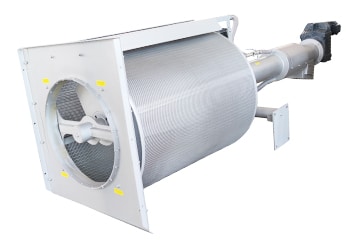
- Intermediate treatment: Intermediate treatment is the stage after primary treatment that focuses on removing organic matter and nutrients from the wastewater. This is usually achieved through biological treatment processes such as biofilters, activated sludge systems or biofilm reactors. In this stage, microorganisms purify the wastewater by breaking down organic matter and nutrients such as nitrogen and phosphorus. Prior to advanced treatment, the main purpose of aeration is to provide an oxygen supply to the microorganisms in the effluent to promote biodegradation and removal of organic matter. This is usually accomplished by bubbling or spraying air or oxygen into the effluent. Microorganisms in the presence of oxygen can more effectively break down organic wastes in the effluent, thereby improving water quality. Therefore, aeration(roots blower) is part of the biological treatment process in wastewater treatment and helps to purify the effluent into cleaner Effluent.
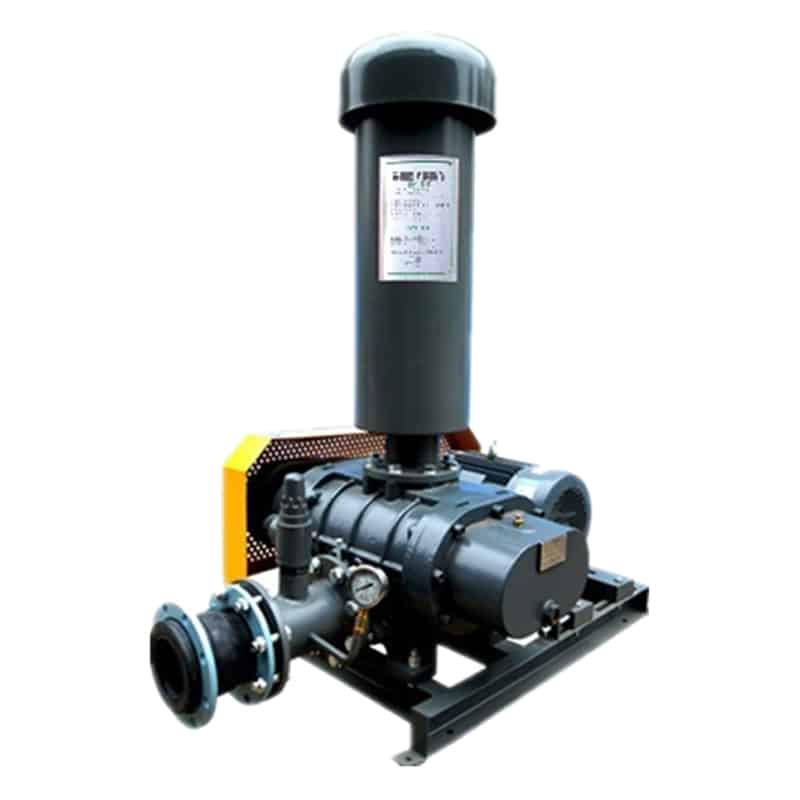
- Advanced treatment: Advanced treatment is optional and is often used where higher water quality standards are required. It may include further biological, chemical or physical/chemical treatment to further remove residual organisms, microorganisms and other contaminants, and may use a diaphragm filter press to further remove residual suspended solids and solid particles Advanced treatment may also include a disinfection step, such as ultraviolet light disinfection or chlorine disinfection(sodium hypochlorite generator), to kill pathogens.
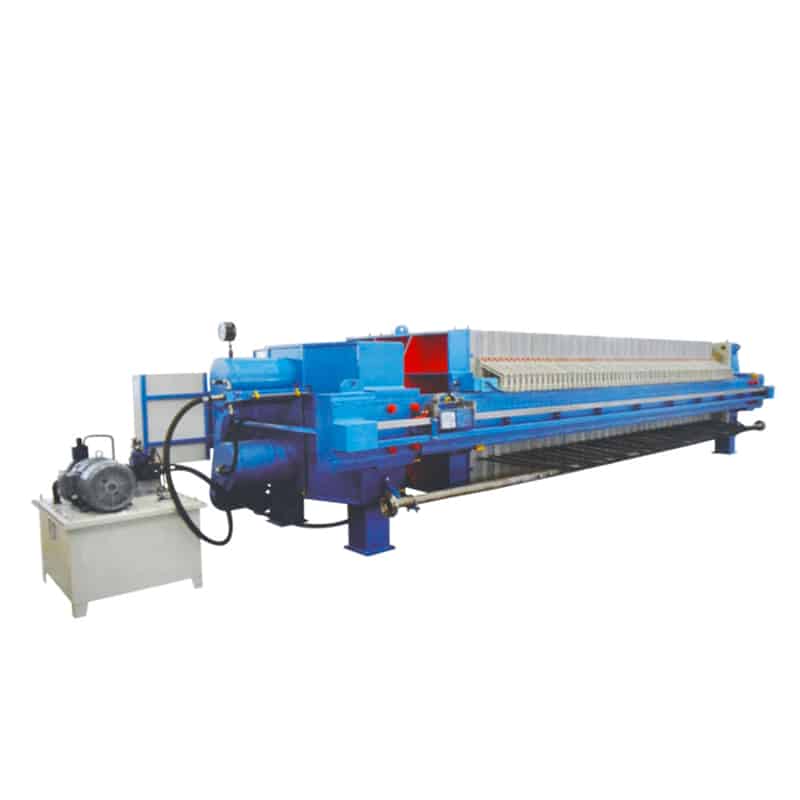
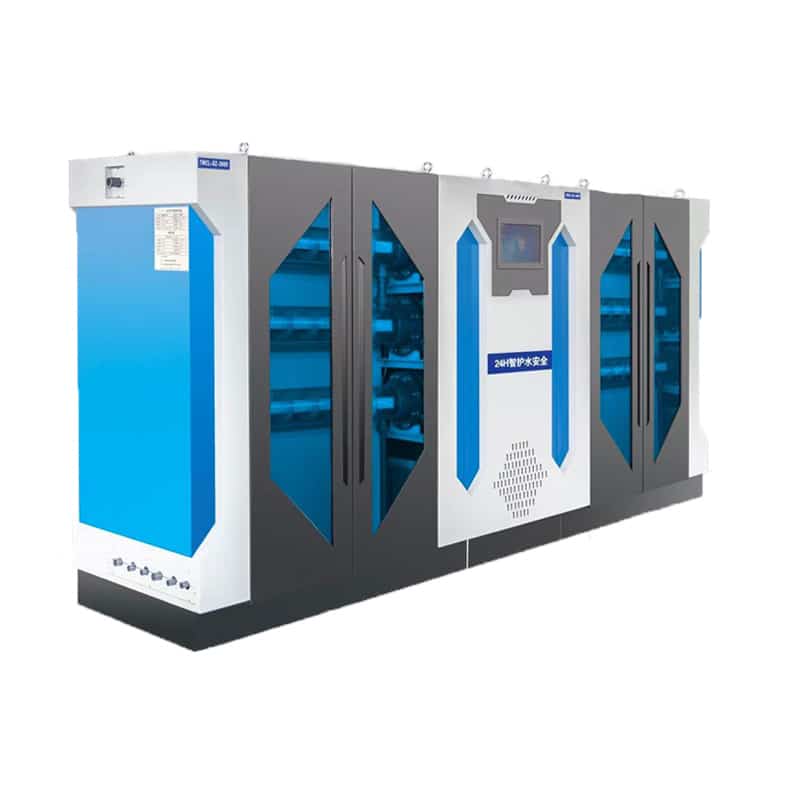
- Sedimentation and settling tanks: In some cases, wastewater may need to remain in a settling tank for a period of time to allow solid particles to settle to the bottom to further purify the wastewater.
- Filtration: Filtration is a physical treatment that removes microscopic suspended solids and microorganisms by means of a filtration medium such as sand, charcoal, or membranes.
- Monitoring and water quality control: Throughout the treatment process, the quality of the wastewater is monitored and controlled. This helps to ensure that the quality of the effluent meets the required standards and that the treatment process can be adjusted to accommodate changing water quality.
- Disinfection: Disinfection is designed to kill pathogens and is usually done using methods such as ultraviolet light, chlorine or ozone.
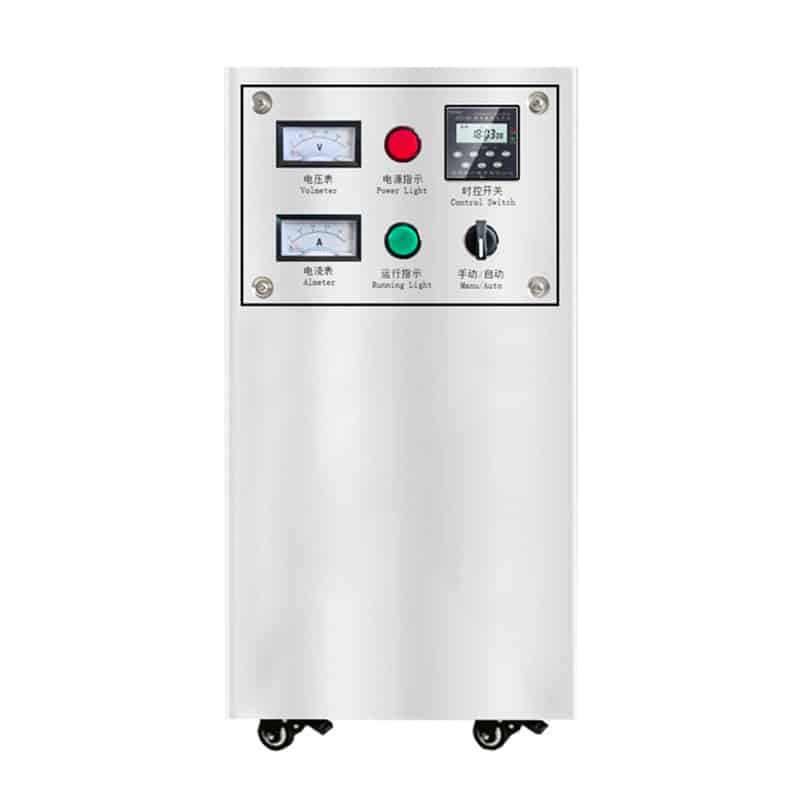
Once the wastewater has undergone these treatment steps, the effluent quality should meet regulatory standards and be safe to discharge into a water body, such as a river, lake or ocean. However, effluent quality standards may vary by region, regulation, and use, so strict adherence to applicable standards is necessary to ensure environmental and public health protection.
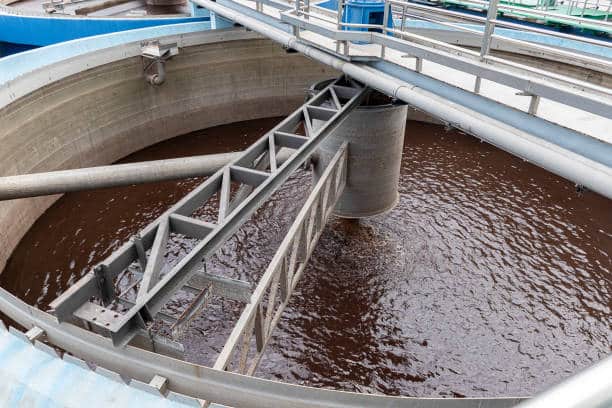
Where does the effluent come out?
- Water bodies: Treated sewage is usually discharged into water bodies such as rivers, lakes, coastal areas or oceans. This is the most common form of wastewater discharge, especially in urban and industrial areas. In these cases, the treated effluent mixes with the natural water body, although certain water quality standards must be met to protect the ecosystem and water quality of the water body.
- Subsurface injection: Occasionally, treated effluent can be injected into the ground to act as a recharge for groundwater resources. This usually requires additional treatment to ensure that the water quality meets underground injection standards.
- Agricultural irrigation: Treated wastewater can sometimes be used to irrigate agricultural land. This use requires that water quality meets agricultural water standards to avoid adverse effects on crops and soils. In some areas, treated effluent is used to irrigate orchards, grasslands, and farmland.
- Industrial use: Some industrial processes may use treated effluent as an industrial water source, such as cooling water or process water. In these cases, the water quality must meet industrial water standards.
- Municipal reuse: Treated wastewater can sometimes be reintroduced into the municipal water system to supply municipal water or to be used for public facilities such as parks, golf courses, or landscape irrigation.
- Environmental protection areas: In some cases, treated wastewater can be used to maintain and recharge water bodies in environmental protection areas, such as wetlands, nature preserves, or wildlife habitats.
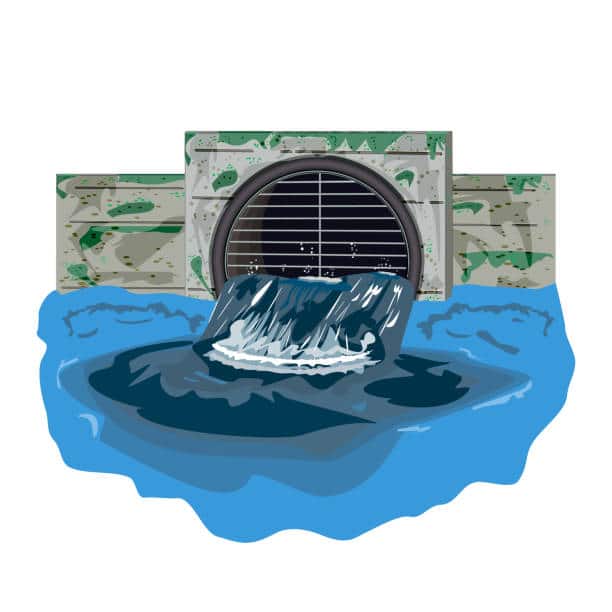
What are the requirements for the effluent outfall?
- Water quality standards: Effluent discharges must meet specific water quality standards. These standards typically include limits for a variety of pollutants (e.g., suspended solids, nitrogen, phosphorus, biochemical oxygen demand (BOD), chemical oxygen demand (COD), heavy metals, organic matter, and pathogens). The stringency of the standards may vary depending on the type of water body (e.g., river, lake, ocean) to which the discharge is made and the use.
- Discharge controls: Regulations typically set discharge limits for effluent outfalls. This can include maximum daily, monthly, or annual discharge limits to ensure that discharges do not unduly impact water bodies.
- Monitoring and reporting: Operators of outfalls are often required to conduct regular water quality monitoring and submit monitoring data and reports to the appropriate regulatory agencies. This helps to ensure that discharges consistently meet standards.
- Environmental impact assessment: In some cases, particularly where there is a new or major expansion of an outfall, an Environmental Impact Assessment (EIA) may be required to assess the potential impact of the discharge on the surrounding environment.
- Health and safety: The operation of an effluent outfall must meet health and safety standards to ensure the safety of staff and the public.
- Licenses and permit approvals: Operating an effluent outfall usually requires a license or permit approval from the government. These permits usually specify the conditions and limitations of the discharge.
- Emergency response plans: Operators of outfalls are often required to have an emergency response plan in place to respond to possible accidents or unintended discharges in order to minimize potential negative impacts.
- Regular maintenance and inspections: Outfalls must be regularly maintained and inspected to ensure proper operation and regulatory compliance.
Summary
When it comes to water treatment and environmental protection, Influent refers to the initial stage of wastewater, which contains organics, pollutants, and impurities that need to go through several treatment steps, such as screening, biological treatment, and chemical treatment, in order to purify and decontaminate it into an acceptable Effluent. Effluent is the final result of the treatment, and it must meet strict water quality standards to avoid negative impacts on water bodies and ecosystems. The key objective of the wastewater treatment process is therefore to convert Influent into high quality Effluent to ensure sustainable use of water resources and environmental protection. This involves complex processes and regulation of wastewater treatment plants to ensure that the quality of the discharged water is in compliance with regulations and is not harmful to the environment and public health.
KUOSI offers a wide range of equipment sizes and options for your industry and application, such as sludge dewatering plants, sludge dryer plants, dosing systems, air flotation machines, aerators, disinfection systems and wastewater screens. Whether you need equipment for wastewater treatment, mining, electroplating, brewing and any other industry. Feel free to contact us.
